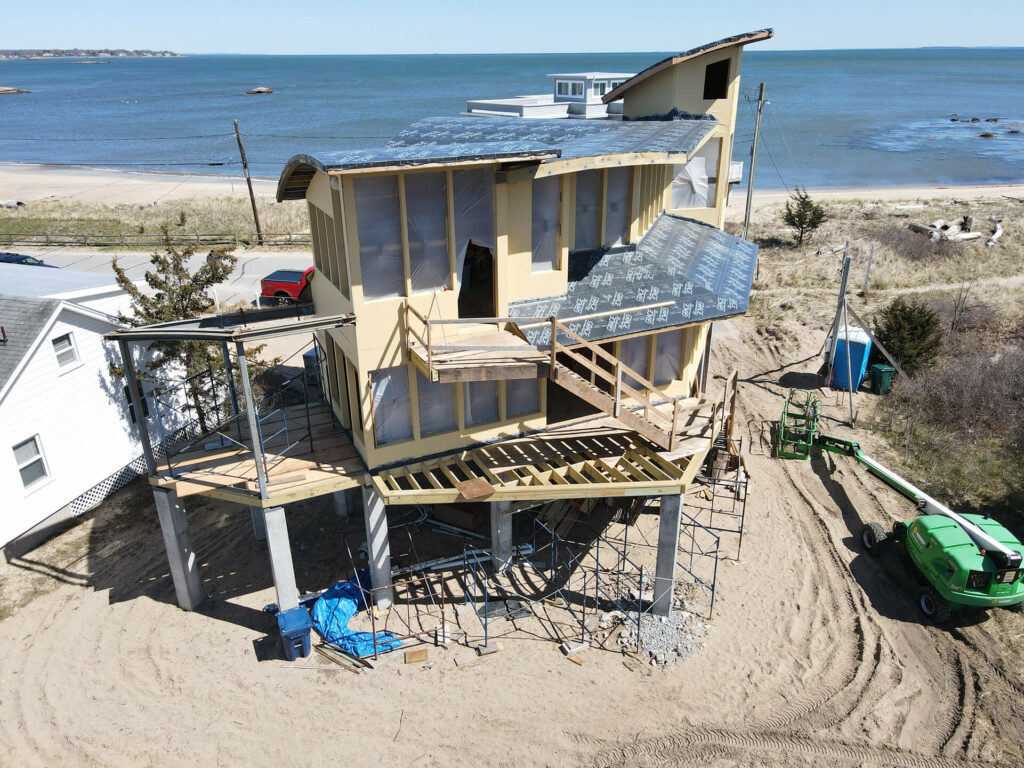Coastal construction is an appealing prospect for many, especially those who are thinking about owning beachfront property. However, building on the coast has different considerations than building on more solid ground. To help ensure your coastal construction project is a success, keep these things in mind.
Check the Elevation
Coastal properties routinely deal with water hazards and different foundational conditions. Before you start to even think about what you’re building, pay attention to what you’re allowed to build on any property you’re considering purchasing. There’s a chance your coastal property will need to have a first-floor elevation level of more than 12 feet. If this is the case, there will be some extra cost you can expect from your project.
Look into Flood Zones
Flooding can be part of the coastal property package, especially depending on how close you are to the water. Coastal flooding also tends to be much more damaging than regular inland flooding, thanks to wave action, storm surge, and erosion. When purchasing property, you’ll want to see what the flooding is like in the area and how it’s previously affected the foundation. As you build, you’ll need to have strong enough materials to withstand flooding.
Plan the Height of Your Project Carefully
Depending on the area you’re building your project in, you’ll have to comply with the community’s specific building codes. In some areas, there’s a movement to restrict the total height of coastal residential structures. This may change your plan by taking away intended floors, especially when you need to combine a height restriction with high elevation requirements. You should investigate this before purchasing a property and while pulling together your building plans.
Accounting for Expected Erosion
We’ve already talked about flooding, but the impact goes beyond what property you purchase and what materials you need to build your home. Because coastal floods are often harsher, the foundational area will go through erosion and scour throughout your structure’s lifetime. The build plan of your structure needs to accommodate for this, so your building doesn’t start to tilt or sink over the years.
Pick the Right Materials
To withstand floods, winds, and other coastal conditions, you need to take into consideration the materials you use for your structure. While some lower-quality materials may be cheaper, you’ll find they aren’t quite hardy enough to withstand life on the coast. Some specific materials in which you want to invest include:
- Roofing material
- Paint
- Ceiling Fans
- Windows
- Decking materials
All of these materials routinely go head-to-head with the elements of the coast. Even if you do save some money on your initial purchases, you’ll likely need to replace them inside of three years. It’s better to take care of the job right the first time.
Think About Your Foundation Type
Foundation plays a big role in how you elevate your home, but there are different types best suited for different coastal areas. You’ll find that building in a V Zone restricts some of your foundation options, while others function better depending on the type of coast on which you’re building. Some of your options include:
- Elevated on Fill
- Closed Foundations
- Open Foundations
You should conduct thorough research to learn if there are any prohibited foundation types in your chosen area. Consulting with your builder can also help you make the best decision for your new building.
When it comes to building on the coast, there are lots of considerations you need to think through even before purchasing a property, let alone starting construction. Working with builders, like the ones at e2 Engineers, who have experience in coastal construction will be your best bet to having a structure that can let you have a building that lasts – so you can thoroughly enjoy the coastal experience. To get started, contact us today.
Sources:

